
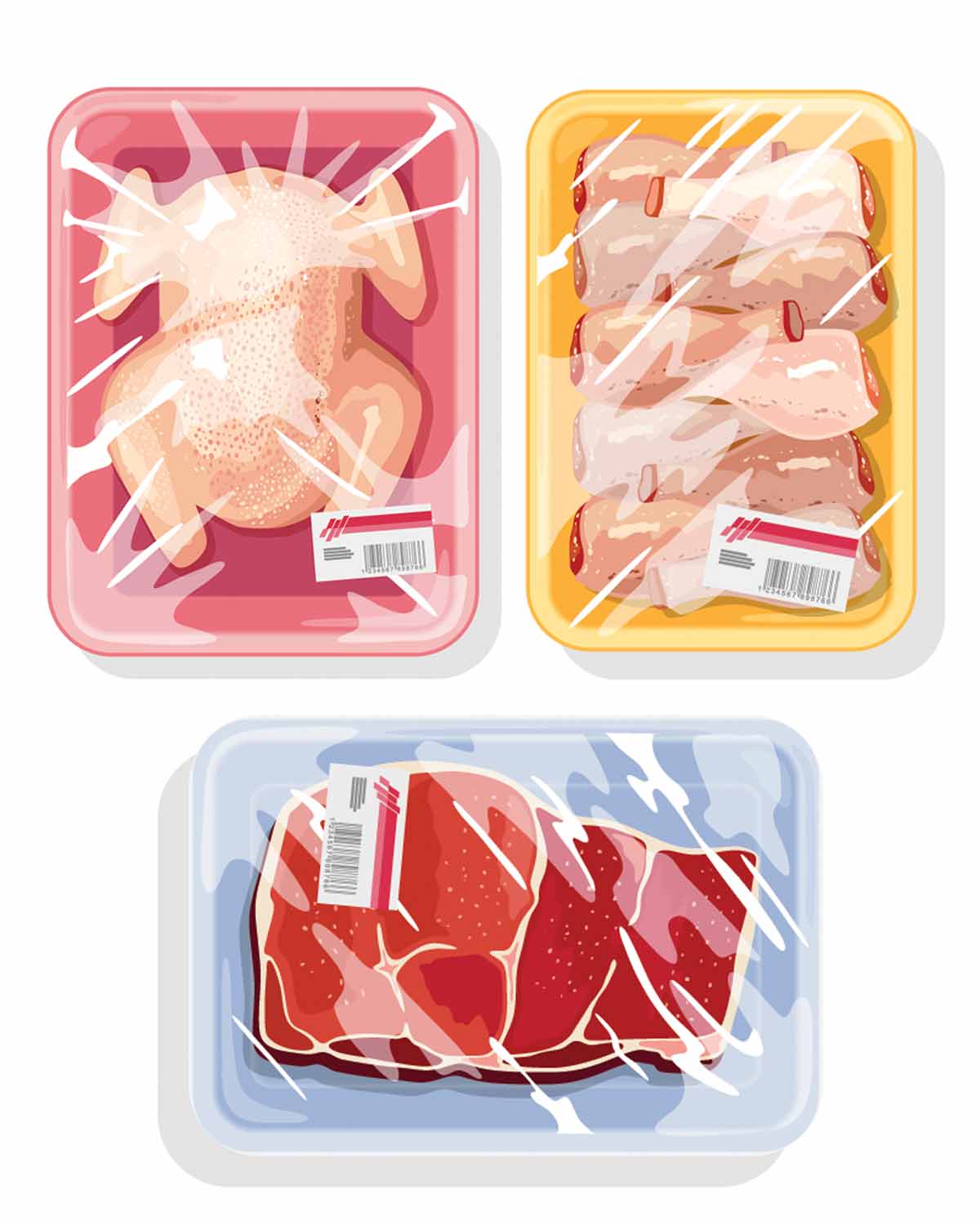
We’re always looking for more ways to cut costs. One of the easiest ways to do that when it comes to cooking starts with our grocery list. Meat accounts for a pretty large portion of the food budget for many of us. We aren’t encouraging you to return to the days of canned meat (though this writer does have a fond place in his heart for a good Spam musubi). Instead, know that many of the best deals at the grocery store can be found by buying larger cuts of meat that have a lower price per pound.
The tradeoff for such a relatively cheap cut of meat? Usually a longer cooking time. Thankfully, the return on your time investment comes back in spades, especially since most of the time is hands-off with little to no supervision required. A small budget doesn’t need to mean small flavor. You simply need to understand how to handle these cheap cuts of chicken, pork, and beef to transform them into spectacular budget-friendly meals.
Whole Chicken
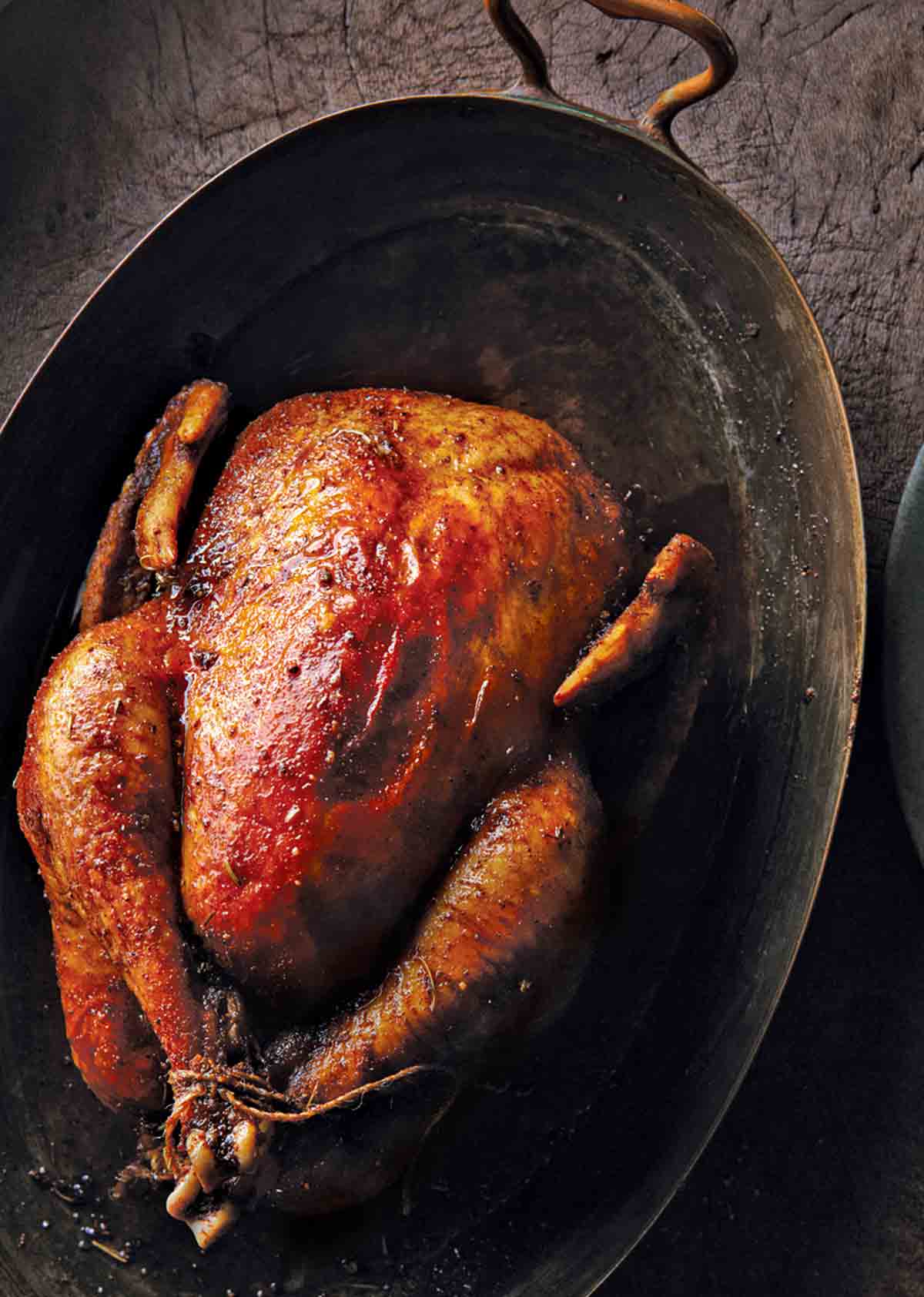
National Average: $1.39 per pound*
In general, cuts of meat with the least processing or work on behalf of the butcher translate to the least cost to the consumer. So it should come as no surprise that a whole chicken is one of the most best cheap cuts around.
This is advantageous if you’re confident in your knife skills (or have a trusty pair of kitchen shears) because you can carve yourself some more expensive parts, such as chicken breasts, for just a little hands-on effort. However, a whole chicken on its own is a gift. You can roast it whole or spatchcock it to decrease the time in the oven or on the grill.
If you’ve roasted the hen whole, don’t even think about tossing that carcass, because you can make your own chicken stock in no time, another great way to stretch its value. (While we love the calm meditation of skimming stock as it burbles on the stovetop for hours, you can also take a hands-off approach by making slow cooker stock or even making small batches of microwave stock in minutes.)
The fryer and roaster distinction you’ll encounter on labels is just a matter of size, with larger chickens (read: older) costing more per pound than smaller ones. Larger chickens also tend to be a little tougher in texture than younger chickens, which is why younger chickens tend to be selected for recipes with quick-cooking times (hence the “fryer” name) and older ones are better for slow roasts in the oven (“roasters”).
Whole Chicken Recipes
Roast Chicken With Moroccan Spices
Classic Roast Chicken
Skillet Roast Chicken
Grilled Roasted Chicken
David Leite’s Best Brined Roast Chicken
More Whole Roast Chicken Recipes
Chicken Leg Quarters
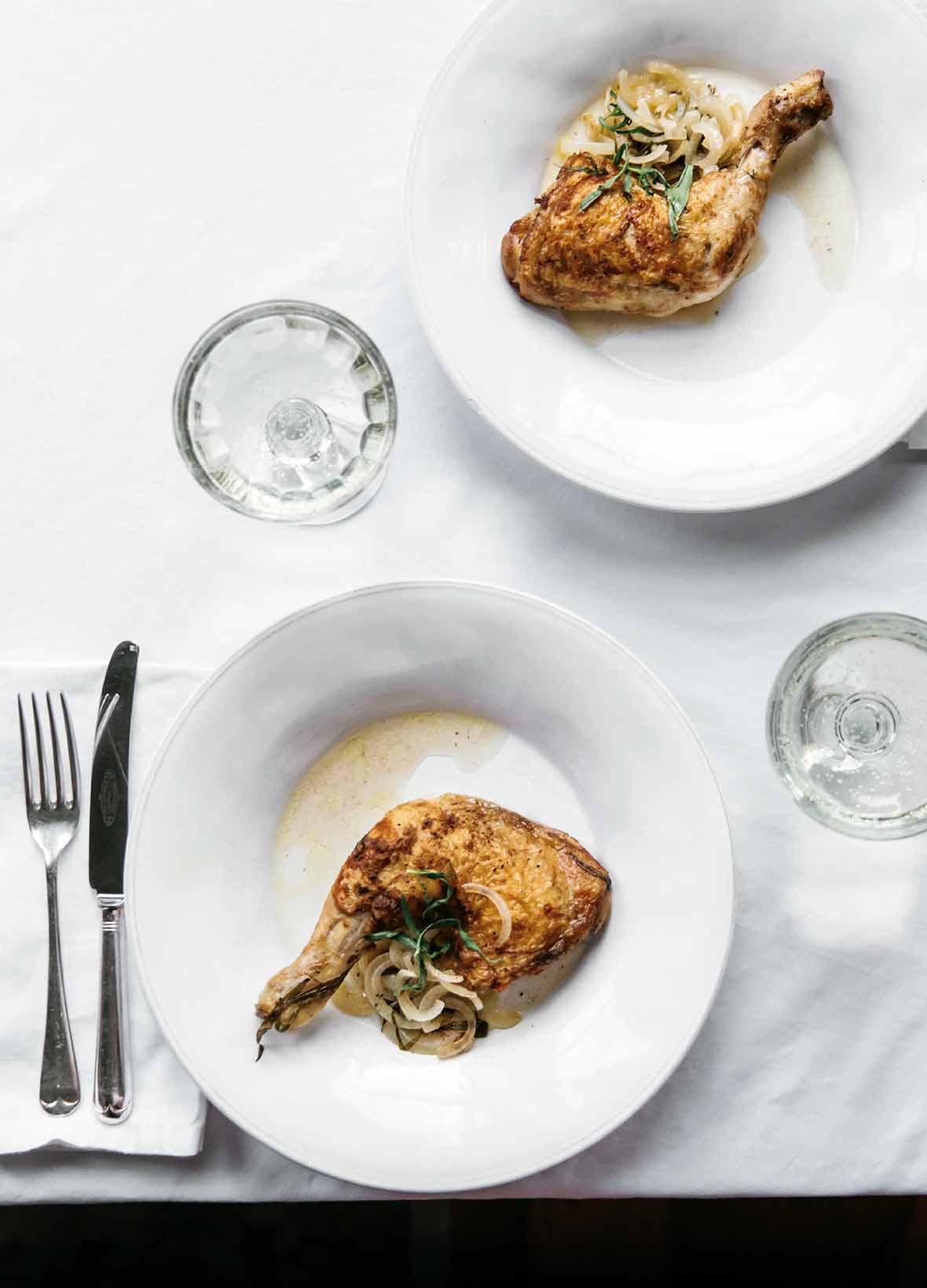
National Average: $1.34 per pound*
Chicken leg quarters refers to the thigh and drumstick portions of the chicken still being connected to one another. Many old-school rustic French recipes call for this cheap cut of meat.
Bonus: You never have to try to decipher a particular weight of chicken to buy when planning dinner. Just buy as many leg quarters as you have people. Additionally, leg quarters are perfect for recipes that call for mixed chicken pieces, since all it takes is a quick incision to separate the leg from the thigh and you have mixed thighs and drumsticks.
Chicken Leg Quarter Recipes
Tarragon Chicken
Baharat Roast Chicken
Slow Cooker Chicken with Garlic and Potatoes
Peruvian Chicken
Jerk Chicken
Chicken Thighs
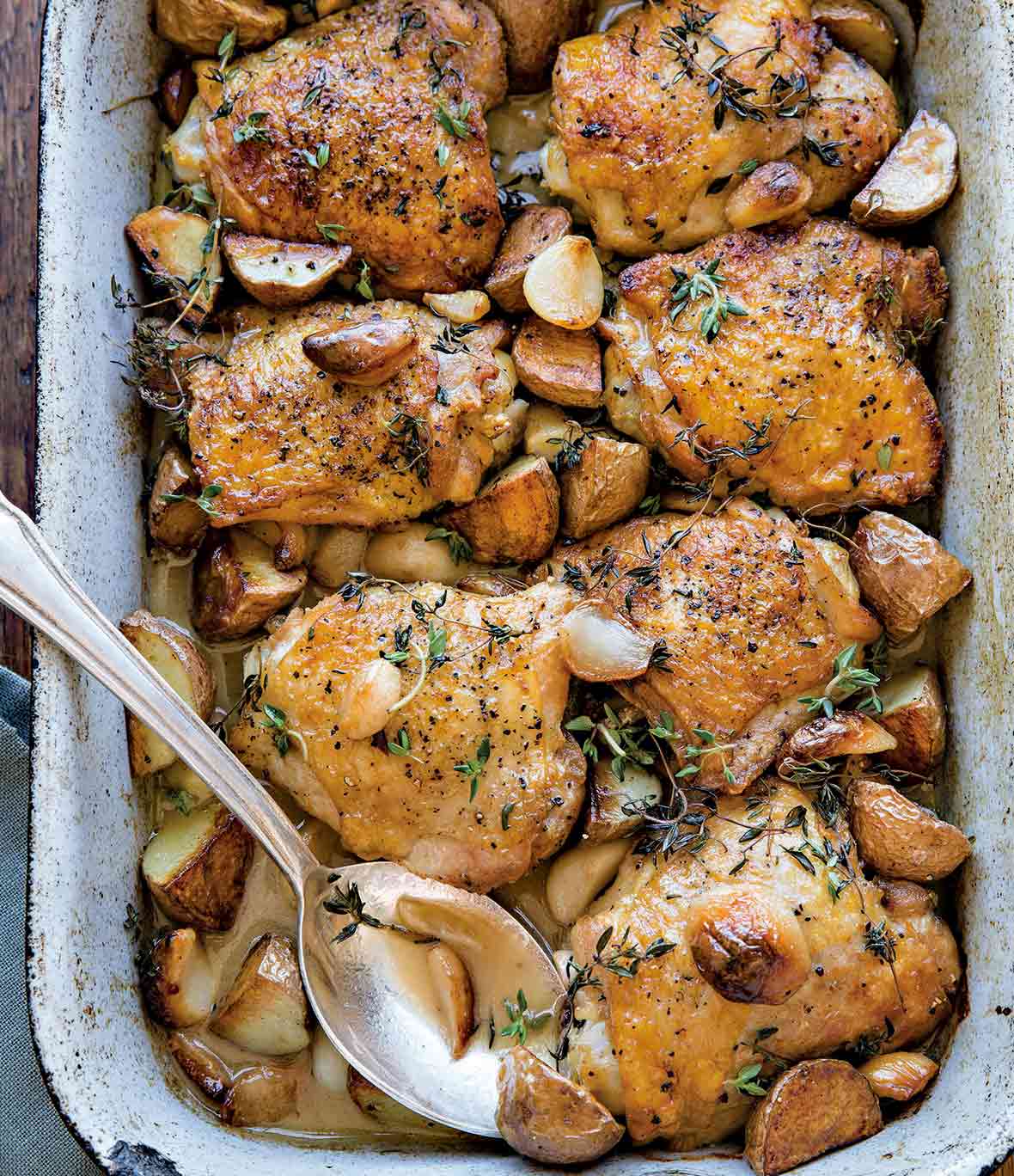
National Average: $1.43 per pound*
With a massive rise in popularity over the last decade, chicken thighs have established themselves as one of the most reliable and coveted warriors in a home cook’s arsenal. With the extra fat as an insurance policy against becoming tough and drying out (yes, we’re looking at you, chicken breasts), they’re both economical and versatile, pairing with a seemingly endless array of global flavors. They can be roasted, grilled, pan-fried, slow-cooked, and even deep-fried. They’re one of our favorite go-to cheap cuts.
Chicken Thighs Recipes
Chicken With 40 Cloves of Garlic
Oven Roasted Chicken Thighs
Beer Braised Chicken Thighs
Baharat Roast Chicken
Roast Chicken Thighs with Lemon
Skillet Chicken Thighs with Schmaltzy, Vinegary Radishes
Skillet Chicken Thighs with Peas and Fennel
More Chicken Thighs Recipes
Chicken Drumsticks
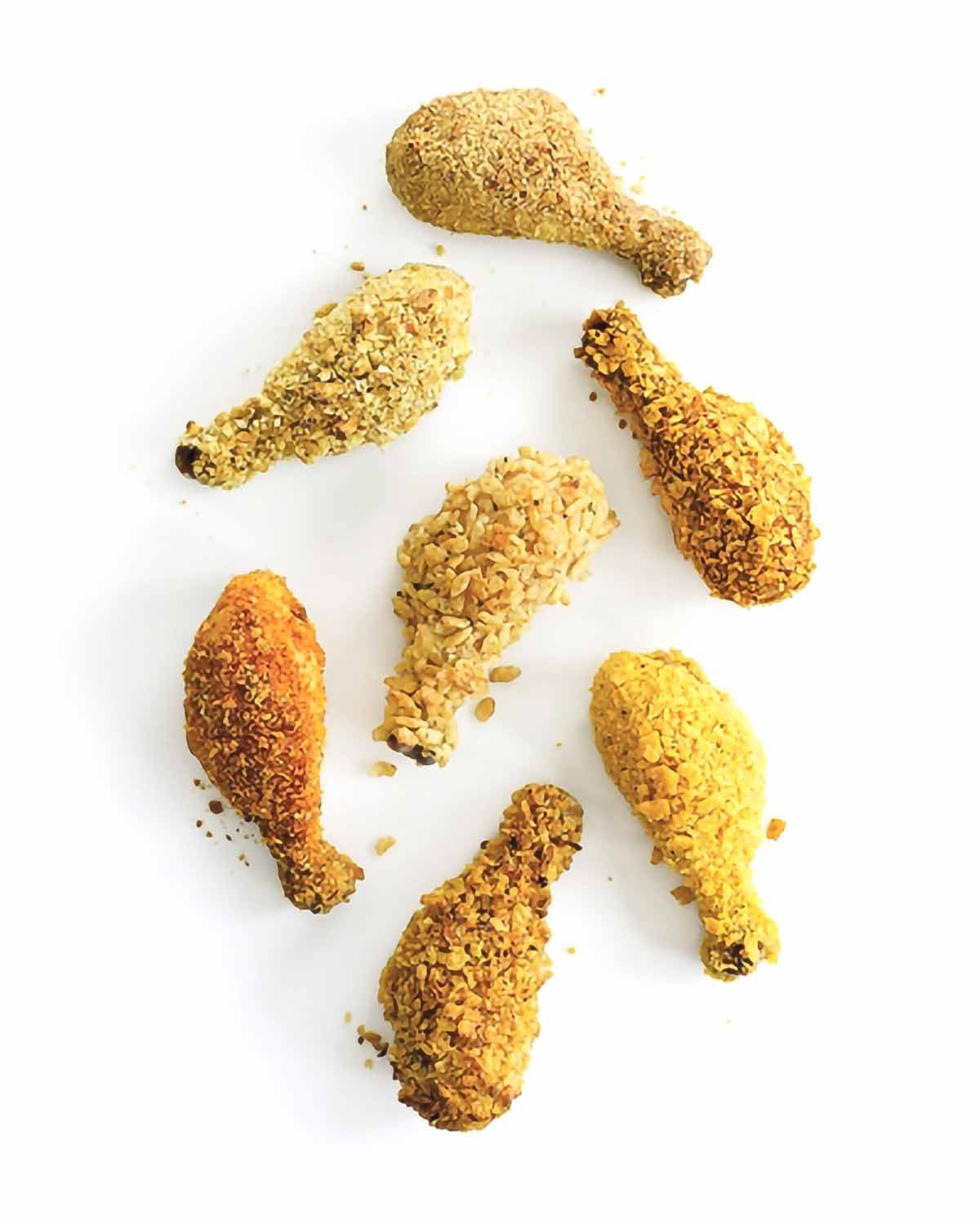
National Average: $1.67 per pound*
An upside to the surge in popularity of chicken thighs is the abundance of leftover drumsticks, which usually means you can find them at exceptionally low prices. While the meat-to-bone ratio isn’t as generous as it is on a thigh, drumsticks retain their moisture and flavor like thighs while inviting a similar cooking treatment to chicken wings. So while they’re perfectly at home in a braise, the kid-friendly “stick” also invites being eaten with your hands, which begs for making fried chicken.
Chicken Drumstick Recipes
Chicken Drumsticks Braised in Wine
Oven Fried Drumsticks
Sweet and Sticky Sriracha Drumsticks
Roast Chicken with Pancetta and Olives
Modern Chicken Marbella
Fried Chicken
Pork Shoulder and Pork Butt
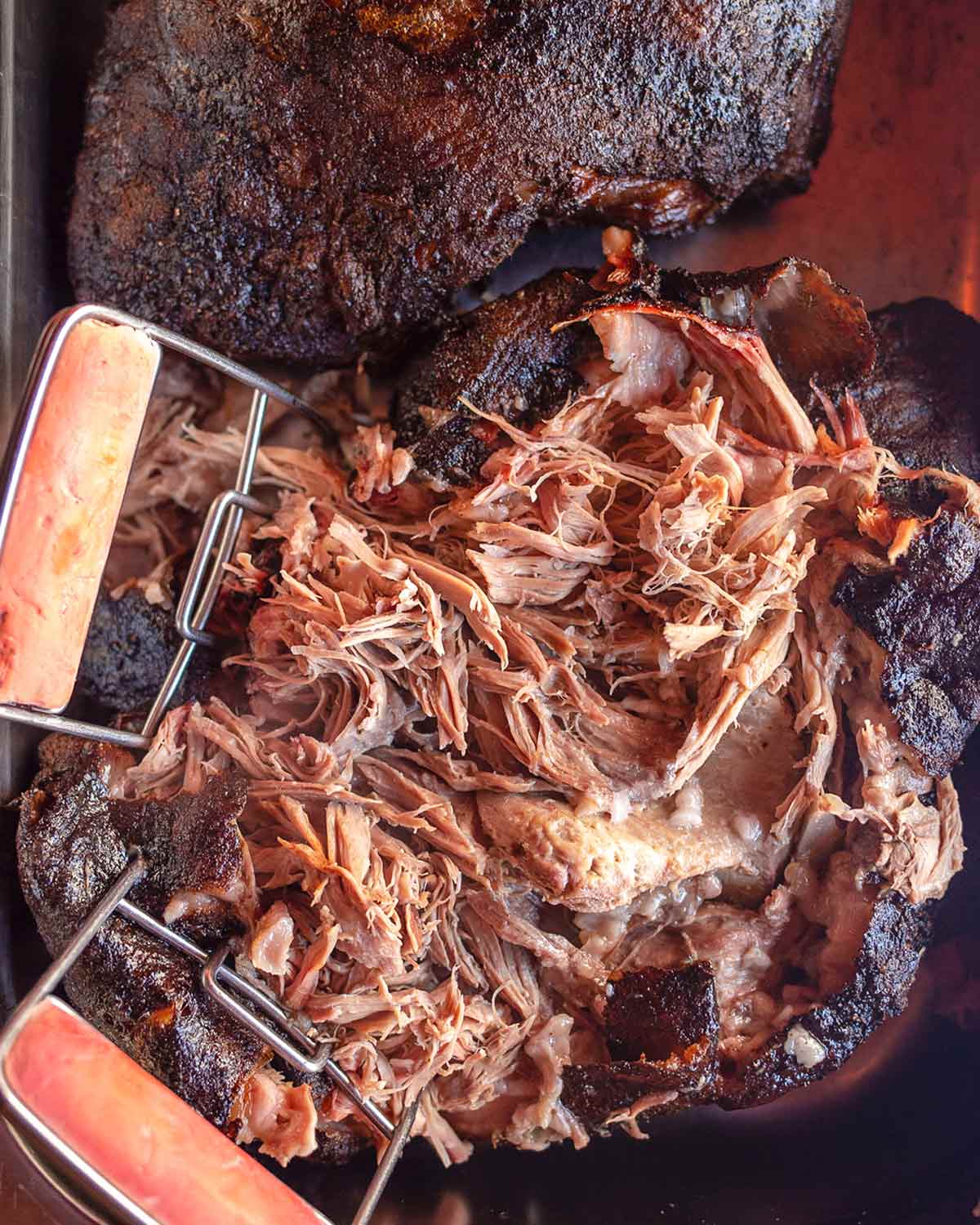
National Average: $1.39 per pound* (bone-in) / $2.45 per pound* (boneless)
Pork shoulder and pork butt (also sometimes called “Boston butt”) are frequently used interchangeably but are slightly different cuts. The inevitable confusion arises because what’s referred to as pork butt is actually from the front of the pig, not the rear. Both “butt” and “shoulder” cuts are from the front shoulders of the pig, with the “butt” being the part up and around the actual shoulder joint and the “shoulder” being from the joint down the front leg a ways.
While you can use these two cheap cuts interchangeably, you’ll get better results for certain things using one over the other. If fork-tender pulled pork is what you’re after, pork butt will provide the best results thanks to its ample marbling and tender texture that, when properly cooked, falls away at the prod of a fork and can easily be shredded for pulled pork. For dishes in which you want to be able to have slices that hold together (think porchetta), pork shoulder will provide you with tender yet sturdy slices with that signature exterior of crisped fat.
Pork Butt and Pork Shoulder Recipes
Roast Pork Butt
Slow Cooker Pulled Pork
Smoked Pork Shoulder
Carnitas ~ Mexican Braised Pork
Braised Pork Shoulder with Chorizo and White Beans
Roasted Pork Shoulder with Mustard Glaze
Ham

National Average: $1.89 per pound* (bone-in) / 1.68 per pound* (spiral-cut)
Hear us out. Ham’s not just for Easter and Christmas! Not only does it provide a ton of servings, but it really is the czar of reinvention when it comes to leftovers. While we can eat as many leftover ham sandwiches as the next pork aficionado, it also unlocks so many other delicious meals. Omelets. Gratins. Soup. Biscuits. Don’t forget about that bone, which can take the place of a ham hock in a split pea soup or a comforting pot of beans.
Pro tip: Cut your leftover ham into smaller pieces and freeze it that way. Diced ham thaws very quickly and then you don’t have to do additional prep work for some future last-minute meal.
Ham Recipes
Glazed Ham
Dr Pepper Glazed Ham
Ham and Cheese Omelet
Ham, Cheese, and Potato Casserole
Split Pea Soup with Ham Hock
Senate Bean Soup
Ham and Cheddar Biscuits
Ground beef
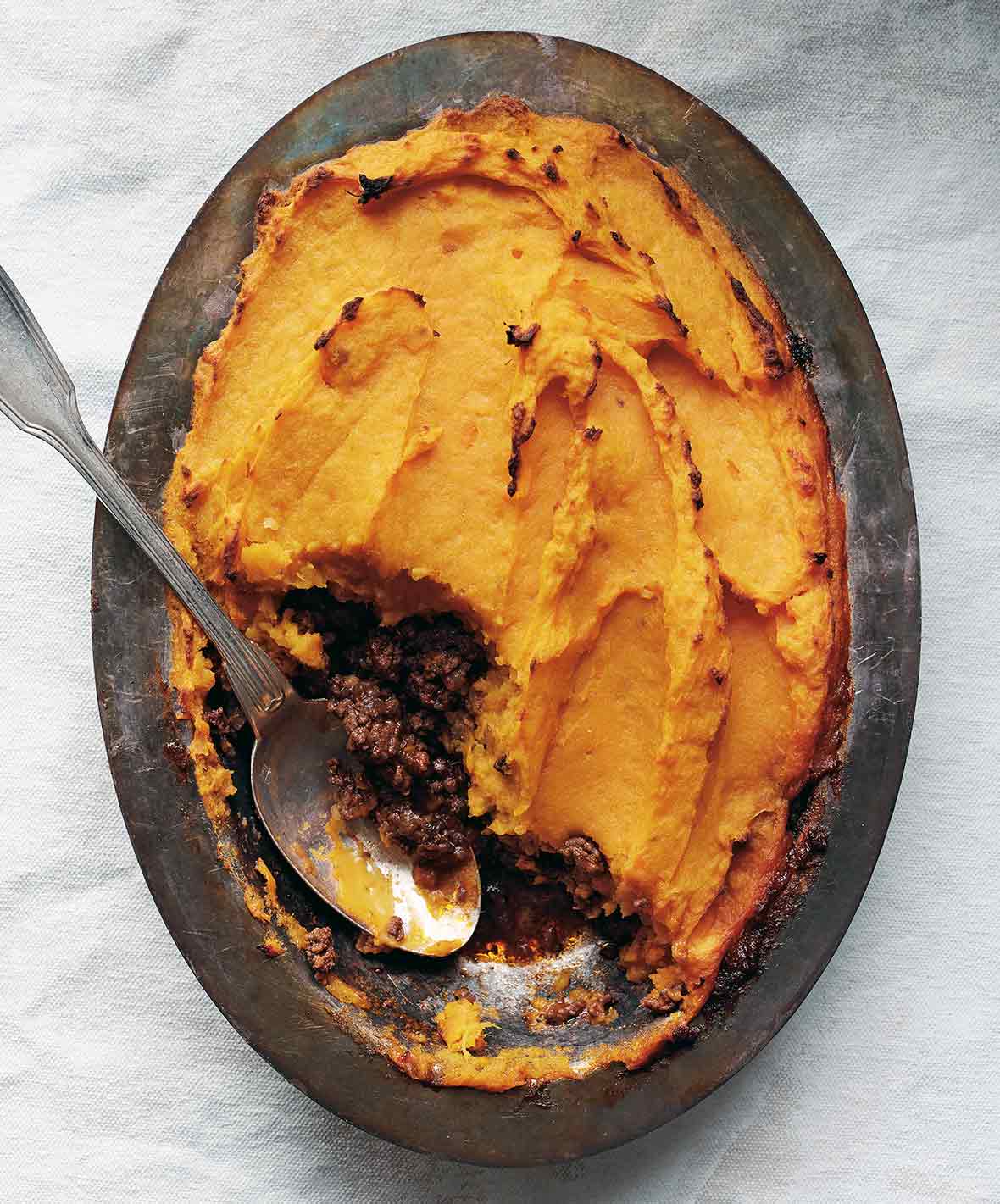
National Average: $2.89 to $5.97 per pound* (depending on fat percentage)
Beef is easily the most expensive protein on this list, but there are less-expensive cuts. And none is less expensive than ground beef, which repurposes many cuts that are less traveled by the home cook into something that appeals to everybody.
Ground beef shouldn’t just be relegated to your standard burgers and chilis and casseroles and meatballs. It can also anchor a larger dish, such as shepherd’s pie. And while we’d eat Marcella Hazan’s bolognese any night of the week, a well-stocked spice cabinet and pantry and a little curiosity can reveal an entirely new world for this often looked-down-upon staple.
Ground Beef Recipes
Spiced Beef Kebabs
Beef Empanadas
Moroccan Meatballs
Spicy Beef Taco Bake
Brazilian Beef Kibbe
Lasagne Bolognese
Beef Chuck Roast
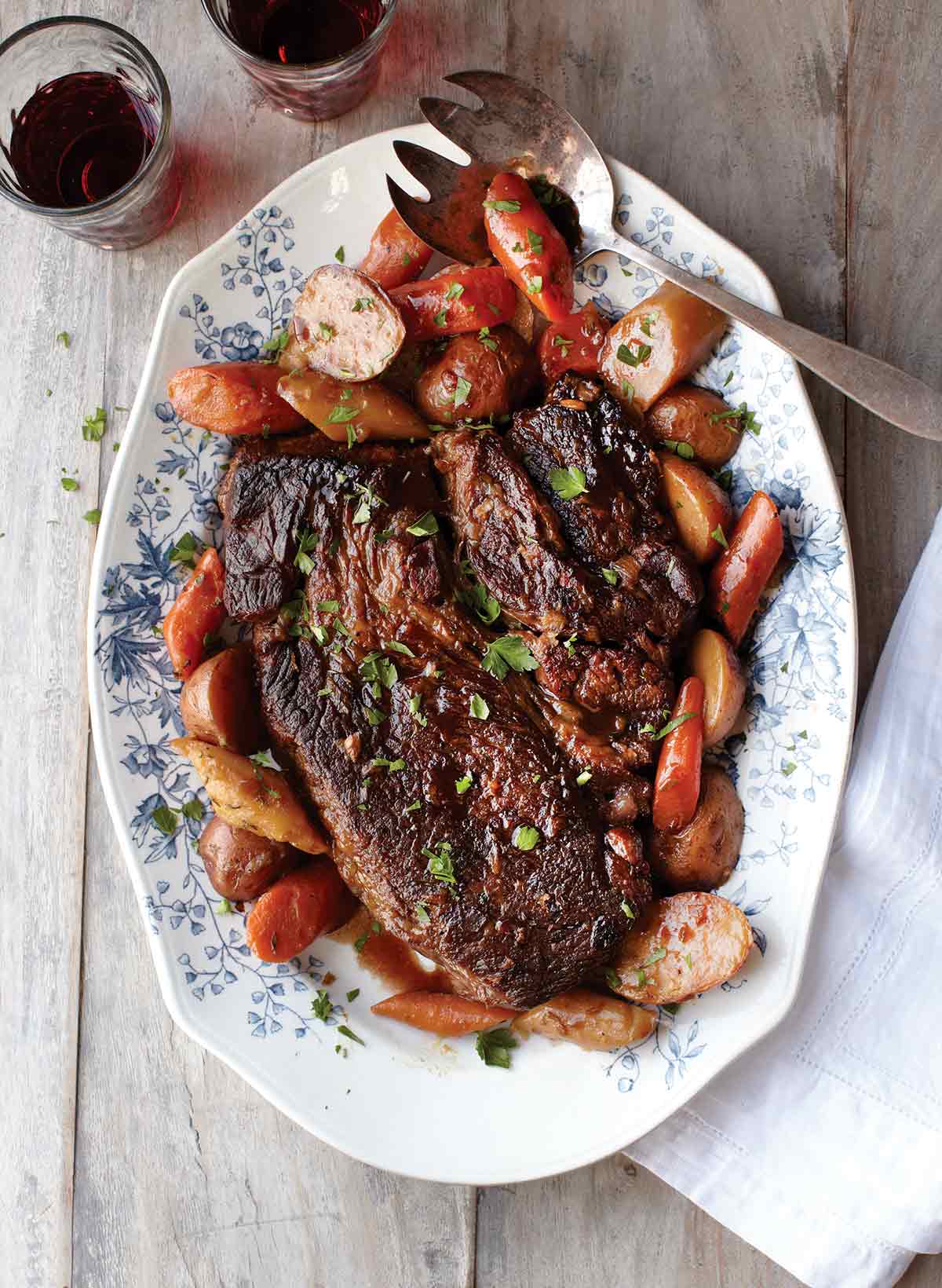
National Average: $5.06 per pound*
Granted, “chuck roast” isn’t the sexiest sounding name something could have. But all is forgotten and forgiven with the first bite of a slow-cooked pot roast with mashed potatoes. The chuck roast is the equivalent of “pork butt” on a cow, coming from the front shoulder area. Loaded with connective tissue and tough muscle that takes time to turn tender, this isn’t a candidate for quick weeknight meals, but give it several hours over low heat in which you slowly coax it to near falling-apart succulence, and you end up with a thing of beauty.
Apart from making delicious shredded beef dishes and pot roast, chuck roast becomes the perfect candidate for a perfectly cooked braise or, if you cut the beef into small chunks, it’s ideal for things like stew or chile con carne. You can ask your butcher to do the chopping for you, though the more obsessive of us like to do this ourselves to ensure they’re all the same size.
Beef Chuck Roast Recipes
Easy Pot Roast With Potatoes and Vegetables
Beef Tostadas
Trinchado ~ Spicy South African Beef
Caçoila ~ Portuguese Stewed Beef
Braised Beef with Red Wine Pasta
Instant Pot Chuck Roast
“London Broil”
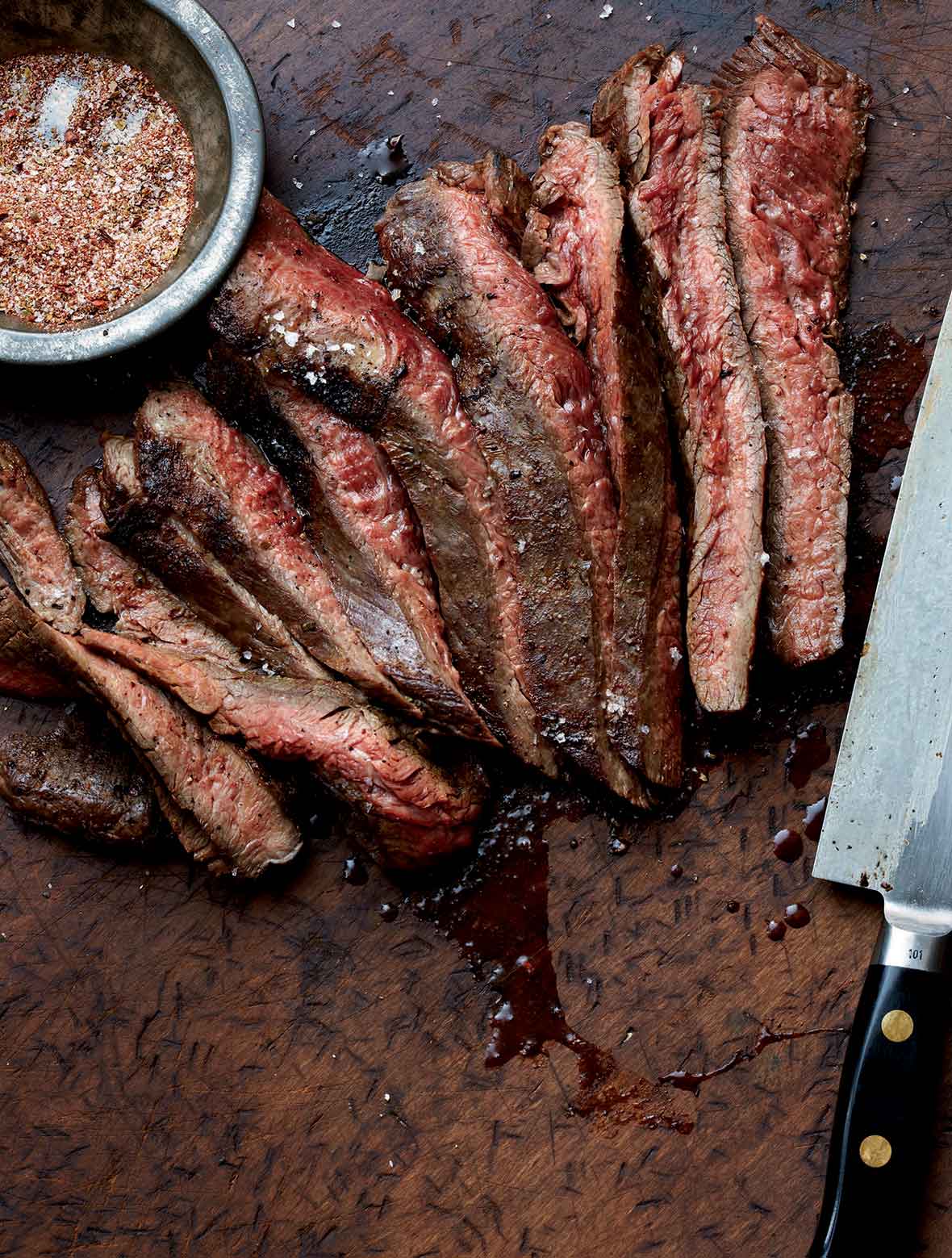
National Average: $4.97 per pound*
The scare quotes simply mean that “London broil” technically isn’t a cut of meat, but rather a name for all cuts of meat that can be prepared as broiled marinated beef that’s thinly sliced across the grain. Traditionally, this was always flank steak, but the term has since expanded to include top round and other sirloin cuts. You can ask at your meat counter to find out exactly what cut the label “London broil” on the package means. Whatever cut you end up buying, since it’s boneless and doesn’t have any pockets of fat, you can eat 100% of what you buy and it makes for a cost-effective way to feed steak to a group.
These lean and tough cheap cuts will all be prepared the same way: marinade for a long time and cook quickly over high heat. The meat is often marinated overnight to ensure the acids begin to tenderize it. And short cook time also means that the marinade is responsible for a lot of the flavor and may rely on the boldest players in your pantry (think Worcestershire sauce, soy sauce, and curry paste) to help achieve maximum flavor.
London Broil (and Flank Steak) Recipes
Grilled Flank Steak
Korean Steak
Skillet Steak Peperonata
Steak Sandwich
Grilled Thai Beef Salad
Steak Tacos
*Prices reflect “USDA National Retail Report,” April 2022, and are subject to change.
Originally published February 25, 2021









Cheap meats + Slow Cooker + an arsenal of spices + onion = lion results from kitten efforts.
We couldn’t have said it better ourselves, Mikey!
One of the best kitchen tools I own is the grinder attachment for my stand mixer. When chuck roast go on sale, it’s time to make ground beef. When I have leftover bits and pieces from trimming other cuts, they go into the freezer until they too can become ground beef.
Combining different cuts into “custom blend” hamburger meat is fun, economical, and you will always know just what’s in your ground beef.
bkhuna,
That’s a great idea, especially since you aren’t ending up with mystery meat! While I haven’t personally done it, I’ve heard there’s a significant improvement in flavor and texture. I’m curious…what mixer/grinder attachment combo you use and how long you have to thaw the frozen meat cuttings before you grind them?
I do the same thing and get Prime Chuck at my Costco for around $5.50 lb.,then use a burger press to make 6 oz. patties and freeze em. Way better than the mystery blend at the supermarket.
Nice, lowandslow!
I would love to hear something about rump roast. It is rarely mentioned. Could someone please explain where it fits into the mix? I’m specifically interested in a sliceable pot roast.
Rita,
We limited the above list to cuts we had tested recipes for on the website, but here’s the details on rump roast
National Average (as of 02/2021): $4.24/lb
The rump roast is a triangular shaped muscle that come from the rear portion of a cow. In the US, this is the very top of the back leg where the hip connects to the rest of the body (called the rump), so is semi-equivalent to a chuck roast from the back side of the cow. It is a frequently used and tough muscle, so it requires a long and slow cook. While we don’t have an exact recipe on the site to recommend, braising is an idea way to do this and you should be able to use it as you would chuck roast in many recipes, just knowing it won’t shred the same way at the end. You can also roast it in the oven for several hours at a low temperature (250-300F), searing either before roasting or afterwards, and carve against the grain like a brisket or flank steak for maximum tenderness. Also, if you like to cook sous vide Alton Brown as a recipe for “I.C. Rump Roast” on Food Network that looks very promising.
Hope this helps!
(Note for International readers: in the UK this area is called the silverside/topside, and the cuts in British markets labeled as “rump” are from the what in the US is labeled “sirloin”. Please don’t try to cook a British “rump” cut like a US “rump” cut and vice versa…you will be very unhappy with the results.)
Jack, how nice of you to take the time to answer my question in such detail. Since I am not a fan of shredded meat (I even prefer my pulled pork on the chunky side to preserve its moistness), I think I will play around with the suggestions you described. I just might try the sous vide and slow-roast ideas first, with a reverse sear.in a screaming hot iron skillet on the grill. Deglazed quickly for a bit of jus.
You’re welcome Rita! If you try either method, please come back and let us know how it worked for you…I know I’m now on the lookout for a rump roast so I can break out my Joule and try that Alton Brown recipe.